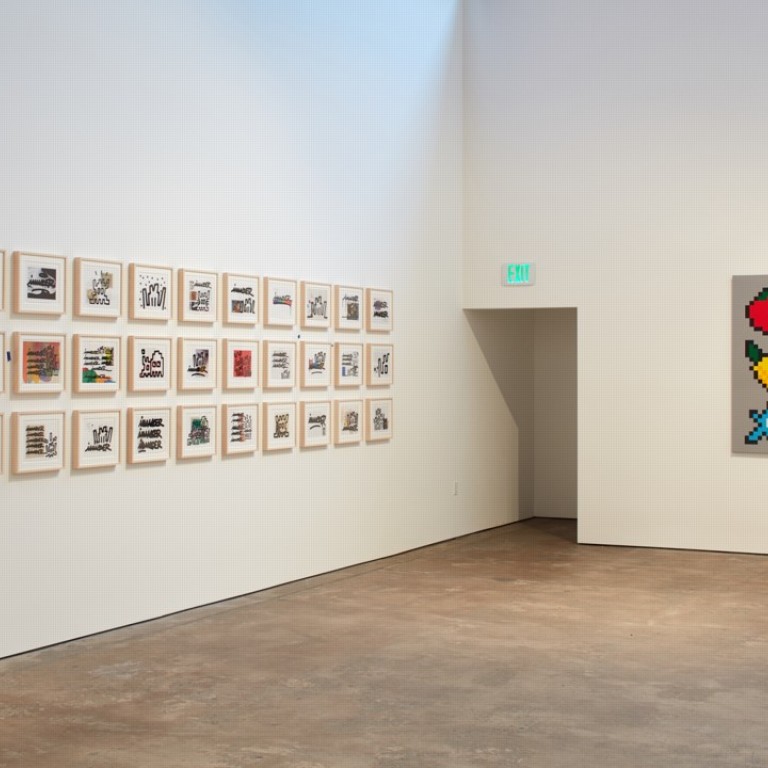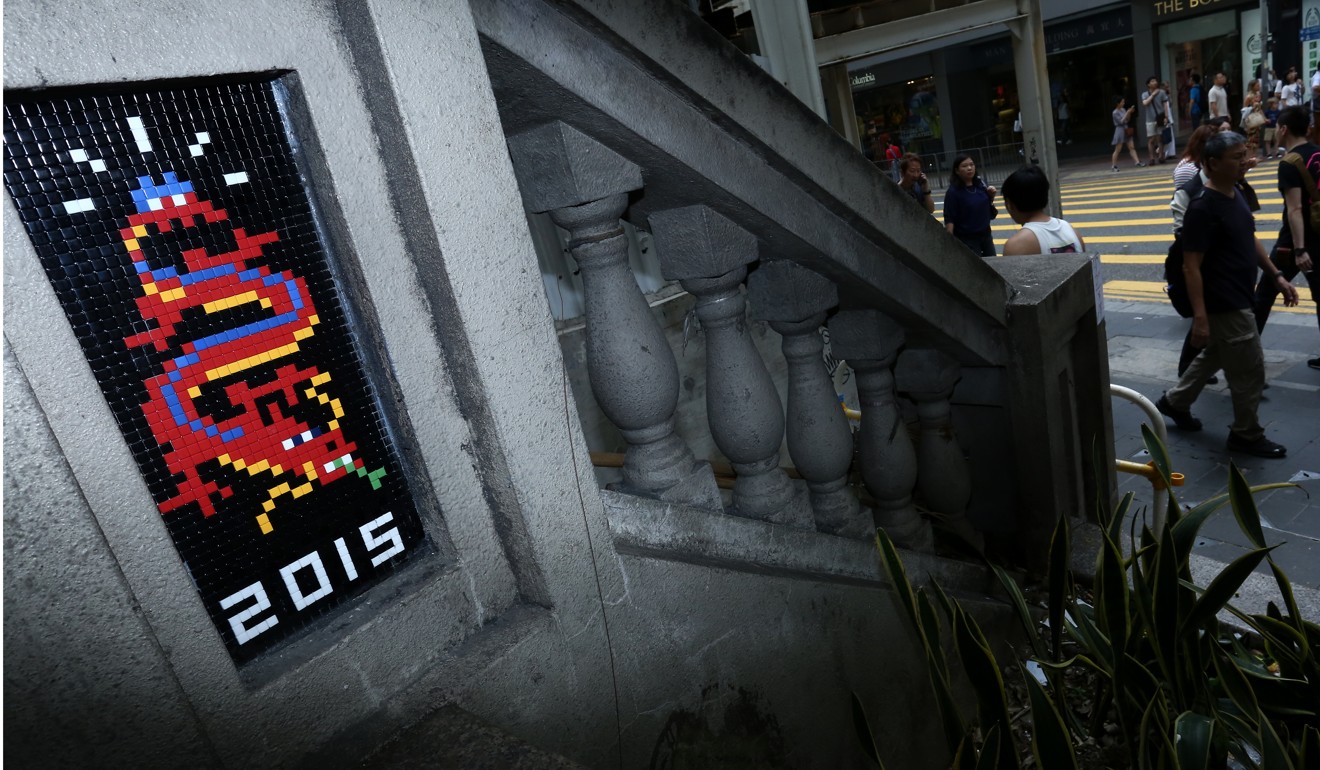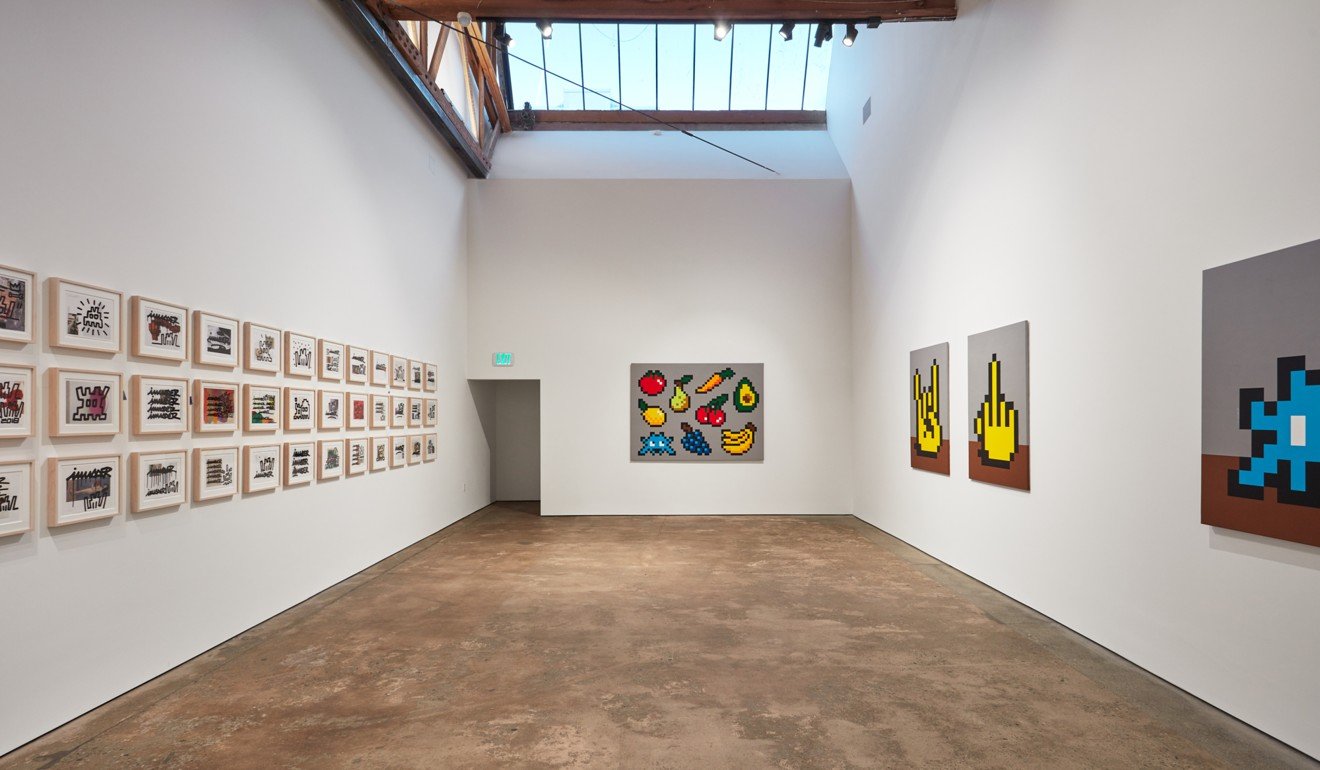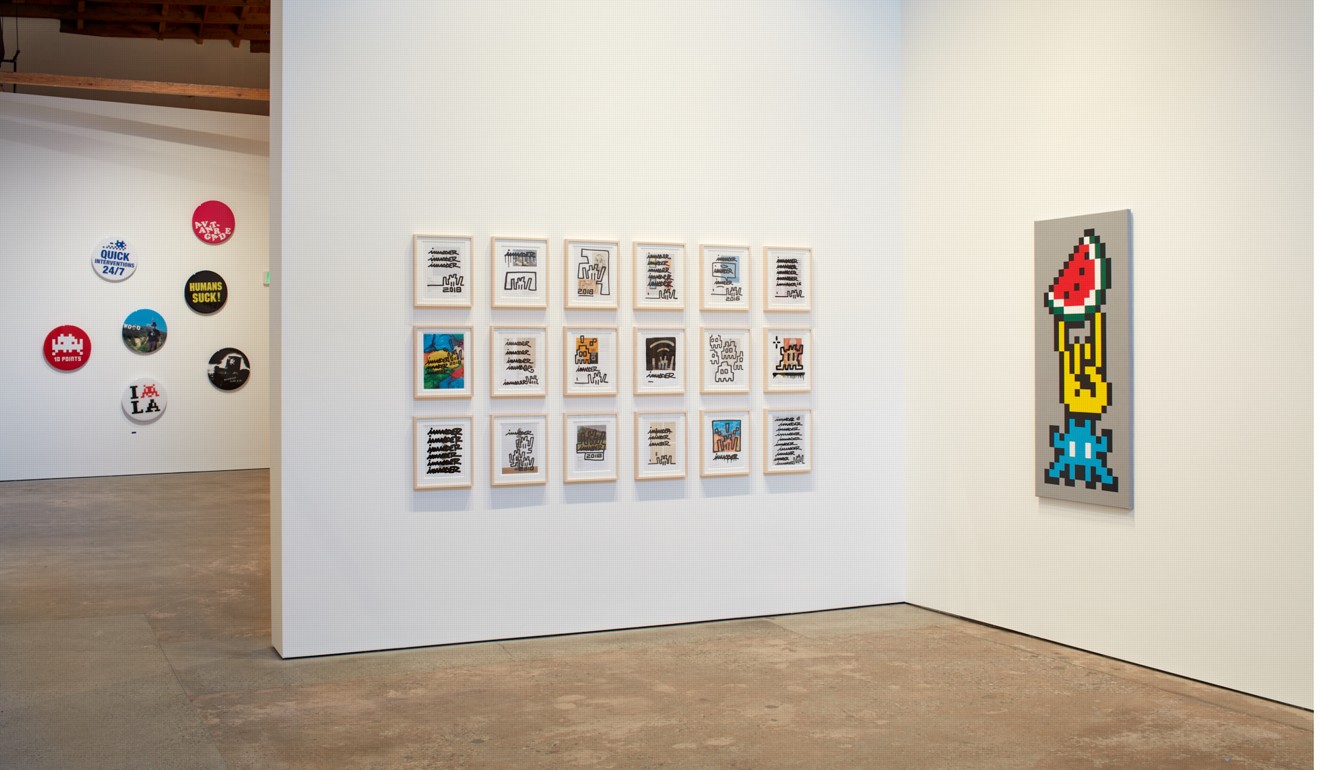
Street artist Invader comes full circle with LA gallery show of paintings
- Famous for his mosaics of retro video game characters, Invader actually started out in a far more traditional way
- New Los Angeles show is his largest ever in the US
The time when street art was synonymous with spray-paint is long past. Today, art on streets the world over has become as diverse as that in galleries: from bronze statues appearing in parks overnight to “street knitters” leaving banisters and lamp posts festooned in colourful yarn.
That might explain why one of the most popular contemporary street artists, whose work adopts one of art history’s most ancient mediums, is now showing his work at a Los Angeles gallery.
These Beijing street artists are taking graffiti in China to the next level
Even if you’ve never heard of Invader, the French artist whose real name, like so much else about him, remains shrouded in mystery, you’ve likely seen his work. His colourful, pixelated mosaics of classic video game motifs – think space invaders, Pacman ghosts and Sonic the Hedgehog – grace urban walls in cities across three continents, from marketplaces in Kathmandu to busy streets in Hong Kong and warehouse districts in Los Angeles.
Invader has been known to conduct interviews wearing a rubber Salvador Dali mask, but when we arranged ours, he opted for a more modern method of preserving his anonymity: email. Even then he was careful not to divulge too much. Take, for example, his answer to a question about his childhood: “I grew up on planet earth in a normal middle-class family near Paris. Nothing much special I can tell you!”

Invader’s commitment to anonymity is so strong that he claims that his parents think he still works as a bathroom tiler.
Today, he is known for his mosaic style, but that wasn’t always so.
“I started working … in a traditional way – painting on canvas – then realised tiles were the perfect medium to represent pixels, so I started making tiled work on wood panels. Those works were inspired by early video games characters because those were simple characters and easy to reproduce.”

One day, as a kind of homage to classic Greco-Roman mosaics, Invader decided to glue the tiles directly to a wall across from his studio in Paris. His trademark motif was born.
It was only after installing that first mosaic that the pun at the centre of his current work occurred to him: the space invader was the perfect mascot for the street artist, a breed who was always being accused of invading public space.
Now, a new exhibition called “Into the White Cube” at the Over the Influence gallery in downtown Los Angeles – his largest ever in the United States – finds Invader returning to his roots: paintings on canvas, shown publicly for the first time in his career.
“The circle is complete,” he says of the new show. “I started out painting and that brought me to work with mosaic tiles. Now I want to come back to painting for the thrill and the challenge it presents … It’s great to go back to a traditional medium and to try to make something new with it.”
Yes, street art has passed from underground to overground and has become valuable. It is a bit disturbing
For such an irreverent personality, Invader can also be surprisingly earnest when it comes to his work. He routinely refers to street art as a mission. “The mission is to spread as many invaders worldwide as possible! And by doing that to create a new kind of relationship between art and people … and to add something new in the urban landscape.”
While he may have originally chosen retro video game characters because they were easy to render in mosaic form, they proved perfect ambassadors of Invader’s world view.
“I want to show that digital technologies have invaded our world and that humanity has entered a new era of its history,” he says. “For better or for worse.”

A cynical observer might see Invader’s move “indoors” as a way to more easily capitalise on his fast-growing success; a canvas is, after all, much easier to sell than a mosaic on the side of a building. But the artist has long toyed with the notion of “street art” in a commercial space, and for every piece of art he installs on the streets, he makes a copy for sale in a gallery.
“Yes, street art has passed from underground to overground and has become valuable. It is a bit disturbing,” he says. “But my thought is that there are two art worlds. On one side the one of creation, with the artists making the best art they can, and on the other side the art market, which speculates on it. As an artist, I try to focus on the first one and try not to be too confused by the second one.”

Invader also obsessively photographs each of his new installations – one way for his work to attain longevity when even the most beloved street artists often have their works torn down or painted over – and produces photo books as well as city guides for his fans to follow. He has even created an app where users can score points for photographing his mosaics on the street, which now boasts 60,000 players.
While street art can seem haphazard, an Invader “invasion” is often the product of weeks of effort.
“I always look for the perfect locations. It is a lot of scouting. The surrounding is important – the light, the size, the colour of the wall, the scenery from the distance,” he explains. “I call it urban acupuncture because I have to find the right nerve point to hit. Furthermore, I like to think that my work does good for the city’s health.”

Invader claims that he has invaded 77 cities, putting up more than 3,500 pieces of art. On his recent trip to Los Angeles – his ninth visit – he installed 29 new mosaics, bringing his total in the city close to 200.
One of Invader’s favourite cities to invade is Hong Kong.
“I find the architecture and landscape in Hong Kong to be truly unique, and I have many fans and friends there,” he says. “One of the first times I was in Hong Kong I met the King of Kowloon, a grandfather of the street art movement in Asia. I even placed an invader in his apartment!”

